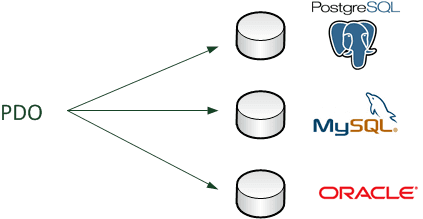How To Connect To An SQL Database In PHP
September 10, 2020
Today, I want to you to learn the right way to make a connection to an SQL database in a PHP project.
td;lr: no time to read, show me the script.
Prerequisite
- Be familiar with the PHP language
- Have a local PHP and MySQL/MariaDB environment
- [Optional] Have a GUI database management app (
phpmyAdminor others), if you don’t have/need this you can use CLI to connect to the database
Goal
I’ve seen a lot of tutorials still teaching deprecated technics to connect to MySQL database in PHP. So, I want this to stop. My goal in this tutorial is to teach you a modern and secure way to connect to any SQL database in PHP. You’ll learn how to use PDO method.
In this tutorial, I’ll be working with MySQL database. There’s no much difference with other SQL-like database systems. So, feel free to use anyone you have.
Let’s start our tour.
The workspace
Create a folder for the project (mine is php-pdo)
mkdir php-pdoAdd index.php, config.php and connection.php
touch index.php config.php connect.phpCreate also a database (test).
CREATE DATABASE IF NOT EXISTS test;Connecting to the database with PDO
To connect to a database, you can use either database-specific extension like MysQLi for MySQL or the PHP Data Objects (aka PDO). The advantage of using PDO is that it can be used to connect to any database. For that reason, we will use PDO in this tutorial.
Now is the time to start using PDO. In connection.php, create an instance of PDO like this:
<?php
$connection = new PDO();Note:
PDO syntax looks stranger to you? Don’t be intimidated by it. Just follow a long with me to see how to use it.
PDO() accepts these four parameters:
- DSN (data source name): type of database, hostname, database name (optional)
- host login
- host password
- additional options
Considering our database info, let’s replace these parametors with their real values:
<?php
$connection = new PDO("mysql:host=localhost;dbname=test", "root", "", [
PDO::ATTR_ERRMODE => PDO::ERRMODE_EXCEPTION
];Notes
- The line
PDO::ATTR_ERRMODE => PDO::ERRMODE_EXCEPTIONinstructs PDO to emit an exception in case of an error.- You may have noticed that I’m not closing my PHP tag. It is optional and even better to leave it off if the last thing you have in a file is PHP code
We are professionals, let’s code as professionals.
Refact the code
Our connection works just fine, but we can still refactor the code. Let’s simplify our connection string like so:
$connection = new PDO($dsn, $username, $password, $options);In config.php, we put all database info:
$host = "localhost";
$username = "root";
$password = "";
$dbname = "test";
$dsn = "mysql:host=$host;dbname=$dbname";
$options = [
PDO::ATTR_ERRMODE => PDO::ERRMODE_EXCEPTION
];Note:
If you use a database other then MySQL, you just need to changemysqlin$dsn = "mysql:host=$host;dbname=$dbname"with the name of your database likepgsql.
Now we can call config.php in connection.php.
<?php
function db_connect()
{
require "config.php";
$connection = new PDO($dsn, $username, $password, $options);
return $connection;
}We create a function that returns the database connection object. Now is the time to:
Use the connection string
In index.php we can use the db_connect() function like this:
<?php
require "connection.php";
$connection = db_connect();
?>
<p>Hello World</p>Going to the browser, you’ll have Hello World printed if everything is OK.
But what happens in case of an error?
Good question. Let’s see how to:
Handle exceptions
Simply speaking, exceptions are just errors. Remember that we’ve set PHP attributes to emit errors as exceptions (PDO::ATTR_ERRMODE => PDO::ERRMODE_EXCEPTION).
First, go to config.php and put something wrong. Let’s say I put the database password as blablabla. Now on the browser, you have this:
As you can see in the image above, the application has encountered an error. It gives the description of the error and also the line where the problem can be found. This can be interesting if we are still developing our app, but when in production, it is a high-security risk. We don’t want to reveal to our visitors too much information about the error. You can notice that the application error tells much about our code: the file, the connection string, and the line.
To fix this issue, we need to use try/catch block.
try {
require "config.php";
$connection = new PDO($dsn, $username, $password, $options);
return $connection;
} catch (PDOException $e) {
die($e->getMessage());
}In a nutshell, the snippet above will first try to connect to the database, and if it encounters an error it catches it and prints just an explicit error message.
Conclusion
In this tutorial we’ve learned how to write a script to connect to an SQL database in PHP like a pro:
- Use PDO
- Use
try/catchblock to handle errors.
You can find all the code here.
Thank you for learning with me.



